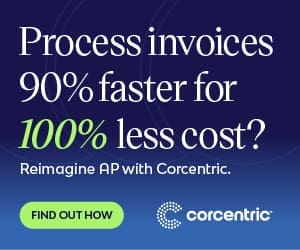Accounts Payable Invoice Processing: Improving Operational Performance With Accounts Payable Automation Software

Accounts Payable Invoice Processing
The efficacy of any software implementation depends strongly on its user’s aptitude to adopt the new solutions and processes. Many organizations have implemented Accounts Payable Automation software to make their systems more efficient and streamlined. Doing so has enabled them to streamline their business-critical accounts payable processes, allowing them to better optimize and scale their resources with faster processing times and improved accuracy. This article looks to help decision makers with understanding the process to improve operational performance with Accounts Payable Automation software.
Organizations should begin by determining their current state of accounts payable as this will enable them to better understand the potential improvement that could be achieved. By distilling their current processes into the everyday tasks of their staff, the executives can define the areas that must be addressed to improve their processes. This analysis can be used to identify the necessary steps for winnowing the antiquated accounting practices and taking an agile, proactive approach to the accounts payable processes.
Following the analysis of the current processes, organizations will begin to quantify the expected return on investment for the Accounts Payable Automation software by taking into account the labor hours that can be saved and reduced payment processing cycles. Companies should look for Softwaresolutions that automate manual, labor-intensive and time consuming tasks that are currently eroding their finances. Automation tools such as capture and coding of invoices, dynamic discounts, business-rule-driven validation, exception handling and complex reporting can provide instant workflow optimization.
When deploying the Accounts Payable Automation system, organizations should consider the impact the implementation will have on the entire process. From outlining the scope of the project, defining the success criteria, to ensuring the onboarding of the first few users is quick, companies should focus on the personnel and resource readiness. Executives must determine whether their staff are equipped to use the system effectively as well as assess any potential training requirements.
Organizations can also ensure data accuracy by configuring the Accounts Payable Automation software to scan through their invoices, capture and classify supplier information. This assists in reducing instances of fraud and leakage of funds due to inaccurate data entry. Accuracy can also be improved in the invoice approval process by taking advantage of integrated data validation and compliance measures. Automation also facilitates efficiently dealing with exceptions, discrepancies and early payment discounts across multiple organizational levels.
Finally, as an organization begins to leverage the Accounts Payable Automation process, the executives should review the system on regular basis. As the use of the software increases, the scope of the system should be provided with the necessary flexibility to meet the changing business requirements. Extensive oversight and regular reviews with the stakeholders will ensure the Accounts Payable Automation system continues to perform optimally and meets the end goal of improving operational performance.

